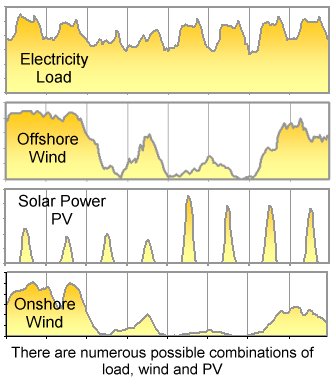Tools for System Analyses
Operators of energy systems are using a range of different tools for analysing system security, fuel consumption, environmental properties, economy and interaction between different parts of the energy system, such as gas, electricity and heating.
Simulating tools are used for estimating the behaviour of an energy system for a certain period of time, for instance a year divided into 8760 (or 8784) hours.
A radical transformation is being carried out for the energy systems in several countries. The purpose is to phase out the use of fossil fuel. The "Energiewende" ("energy turnaround") in Germany also includes phasing out of nuclear energy.
There are strong opinions about the transformations. In many cases the planning seems to be based on wishful thinking rather than quantitative analyses. Therefore there is a risk of underestimating costs and technical challenges.
Balancing the power systems will be an increasing challenge. Traditional energy systems have a predictable demand side and a controllable supply side. Wind power is expected to be the work horse of the future. Normally the wind power output will not follow the load. The spontaneous reaction was that demand must follow production. The concept has been introduced as "the smart grid".
However, the wind power capacity is growing much faster than the smart grid results. Fortunately, there are other options when the operation of different energy systems can be coordinated.
The simulation tools mentioned below are designed for testing a large number of different operating conditions during a year. Hourly time series for traditional electricity demand, heat demand, onshore wind power output, offshore wind power output and solar power (PV) are essential data.

It is particularly important to characterize and quantify the operating conditions for the dispatchable power plants which must fill the gaps in wind and solar power.
Two different tools have been developed for that purpose:
- PWSIM simulates hourly electricity production based on a merit order list. The main inputs are electricity gross consumption, Wind and PV output, dispatchable capacity and commodity prices. Read more about PWSIM.
- The wind integration model also includes demand and supply of district heating. This model can demonstrate how heat storages, electric heaters and heat pumps can absorb variations in wind and solar power. Read more about the wind integration model.